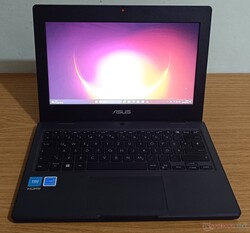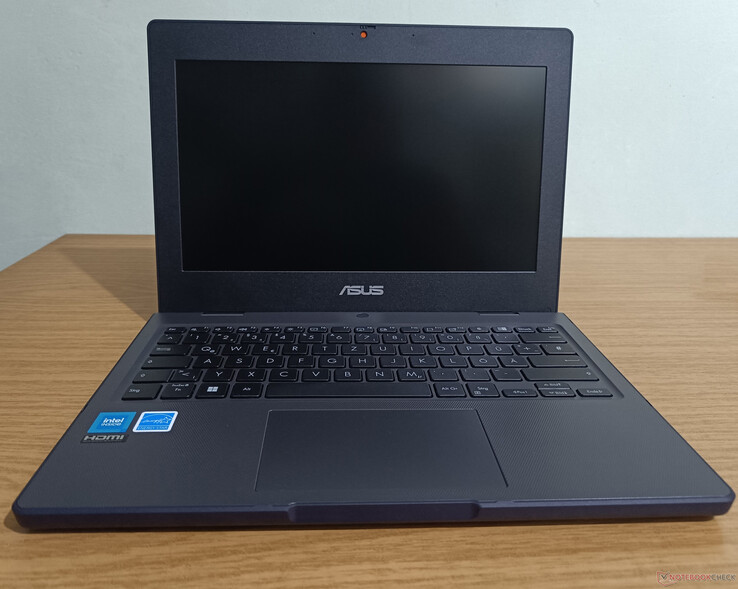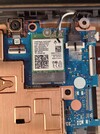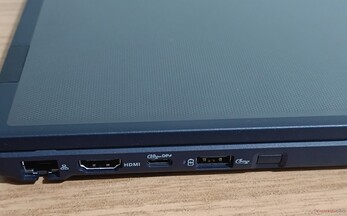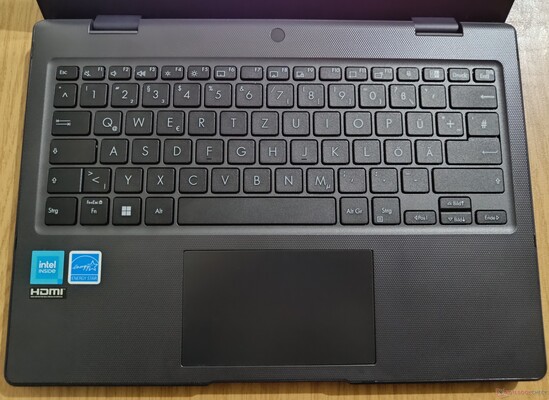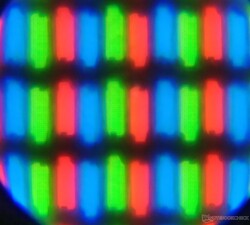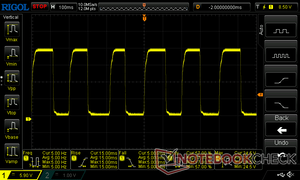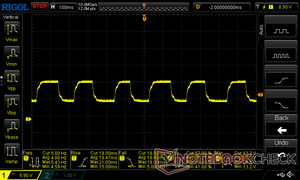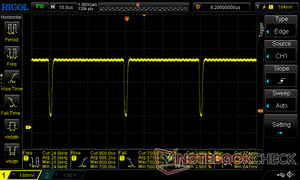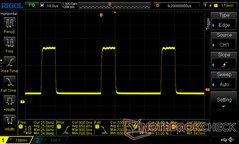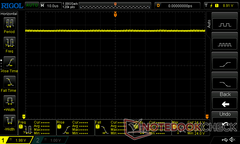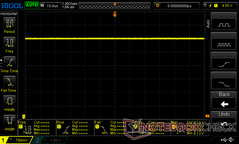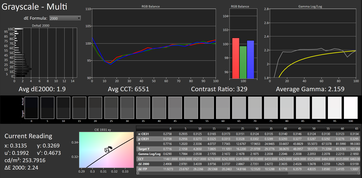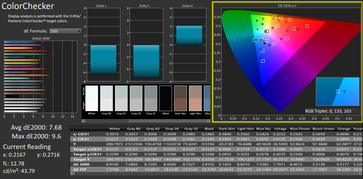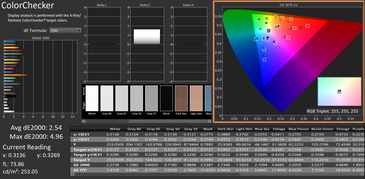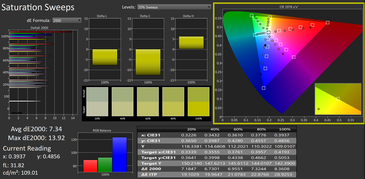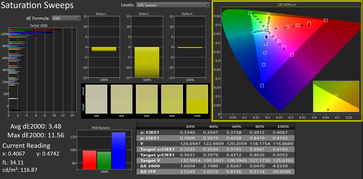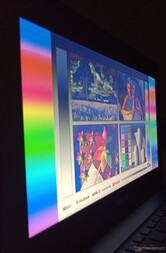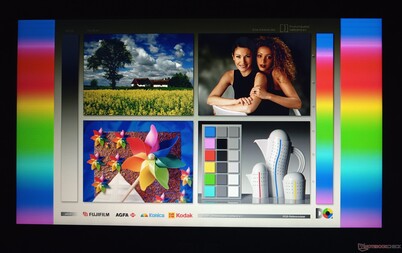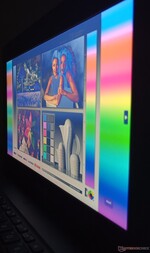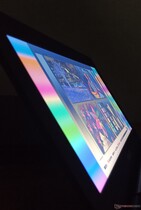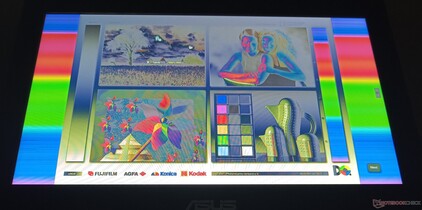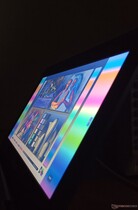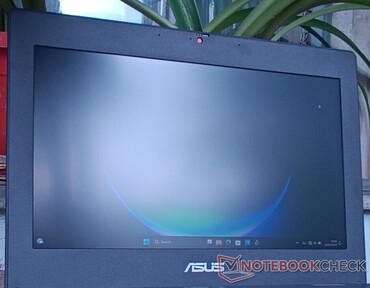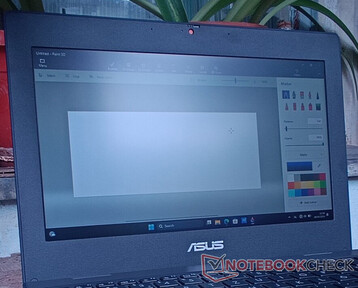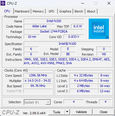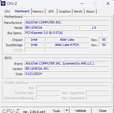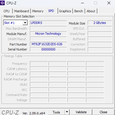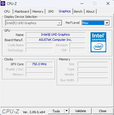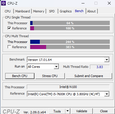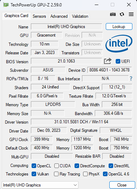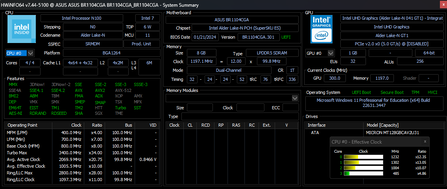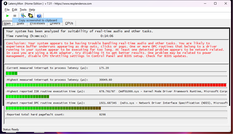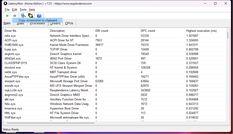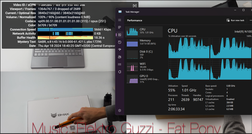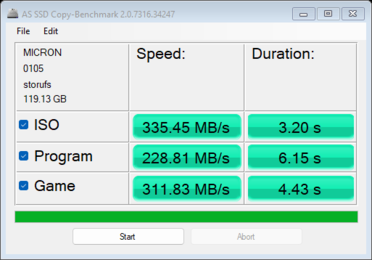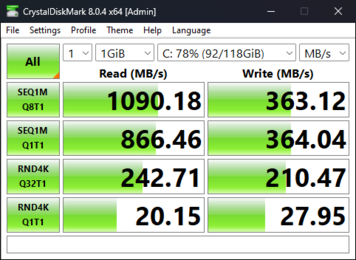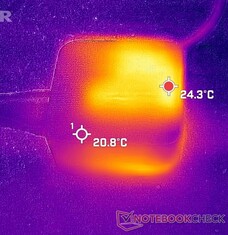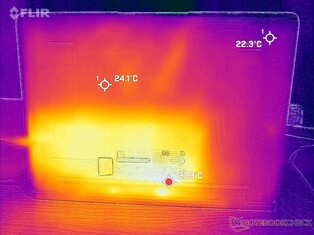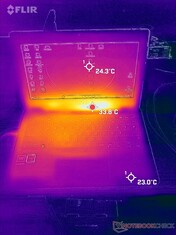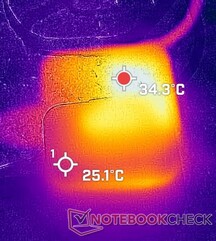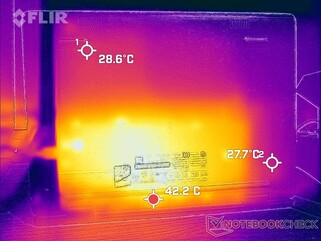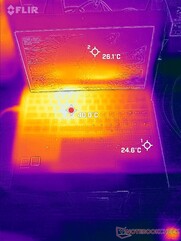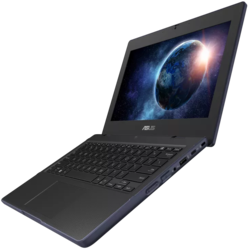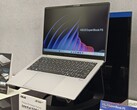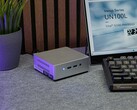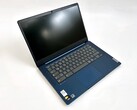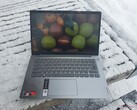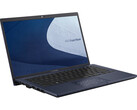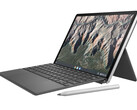Asus ExpertBook BR1104CGA review: silent educational laptop with great battery life thanks to Intel's N100
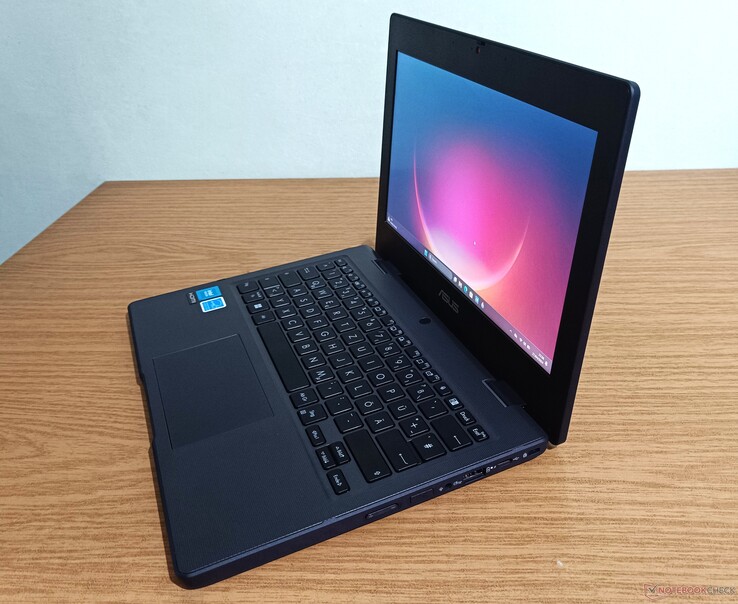
The BR1104CGA-N00007XA is part of Asus’s 2024 lineup of ExpertBook educational laptops with budget-friendly prices in the sub-€400 range. This model is the first laptop with Intel’s N100 processors we review. It is not the first device with that CPU to hit our labs, however, as we have already reviewed several N100 mini PCs since late 2023. Specs are in line with low budget devices suited for students, so we are looking at only 8 GB LPDDR5 RAM, 128 GB storage and an 11.6-inch TN LCD with 1366 x 768 resolution. Nevertheless, the Intel N100 provides enough processing power for educational purposes and offers silent operation combined with excellent battery life.
potential competitors in comparison
Rating | Date | Model | Weight | Height | Size | Resolution | Price |
|---|---|---|---|---|---|---|---|
| 79.5 % v7 (old) | 06 / 2024 | Asus BR1104CGA-N00007XA N100, UHD Graphics 24EUs (Alder Lake-N) | 1.6 kg | 21.2 mm | 11.60" | 1366x768 | |
| 72.8 % v7 (old) | 01 / 2024 | Minisforum Venus Series UN100L N100, UHD Graphics 24EUs (Alder Lake-N) | 365 g | 46 mm | x | ||
| 80.1 % v7 (old) | 12 / 2022 | Asus ExpertBook L1 L1401CDA-EK0457R R3 3250U, Vega 3 | 1.5 kg | 19.2 mm | 14.00" | 1920x1080 | |
| 82.6 % v7 (old) | 02 / 2023 | Lenovo IdeaPad 3 14ALC6-82KT0077GE R3 5300U, Vega 6 | 1.4 kg | 19 mm | 14.00" | 1920x1080 | |
| 79.5 % v7 (old) | 10 / 2021 | HP Chromebook x2 11-da0023dx SD 7c, Adreno 618 | 583 g | 7.7 mm | 11.00" | 2160x1440 |
Case and Connectivity
This model’s chassis is completely made of solid plastic and the lids plus the frame around the keyboard / trackpad have a texture that helps improve the grip. The bottom lid can be removed, but only for dusting and maintenance, since RAM and storage cannot be upgraded. For an 11.6-inch laptop, the 1.6 kg weight is above average.
Port selection includes 1x USB-C 10 Gbps (DP+PD), 1x USB-C 2.0, 2x USB-A 5 Gbps, HDMI 1.4 video out, Kensington lock audio and GbE jacks, which are more than enough for this price point.
Wireless connectivity is limited to Wi-Fi 6 5GHz and Bluetooth 5.2. Download speeds are close to theoretical maximum, yet the upload speeds are a bit slower than average.
Webcam resolution and color accuracy are low, as expected for this price point. Still, Asus provides a physical privacy shutter for increased security.
Connectivity
| Networking | |
| iperf3 transmit AXE11000 6GHz | |
| Lenovo IdeaPad 3 14ALC6-82KT0077GE | |
| iperf3 receive AXE11000 6GHz | |
| Lenovo IdeaPad 3 14ALC6-82KT0077GE | |
| iperf3 receive AXE11000 | |
| Minisforum Venus Series UN100L | |
| Asus ExpertBook L1 L1401CDA-EK0457R | |
| Asus BR1104CGA-N00007XA | |
| iperf3 transmit AXE11000 | |
| Minisforum Venus Series UN100L | |
| Asus ExpertBook L1 L1401CDA-EK0457R | |
| Asus BR1104CGA-N00007XA | |
Webcamera
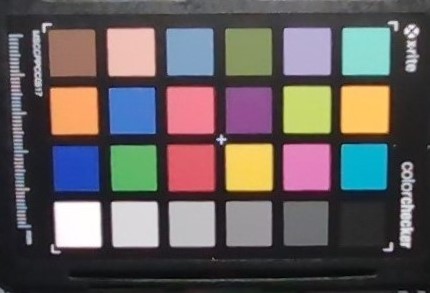
Input Devices
Regarding the typing experience, the keys on this model offer a shorter travel, but nothing too inconvenient. However, it features the German layout that switches the Z key with the Y and some special characters are placed differently compared to a standard QWERTY layout. Unfortunately, the low-budget specs do not allow for backlight illumination.
The trackpad acting as a mouse replacement is large enough, with a smooth texture that facilitates easy finger gliding. It looks like the build quality is not that great though, as the trackpad starts to creak a bit after a while when doing tap gestures.
Display
Given the low-cost specs of this model, the 11.6-inch TN display with matte coating does not come as a surprise. It is also limited to 1366 x 768 resolution, yet its performance is a better-than-average. The center of the screen almost hits 300 nits, while the overall average is 273.6 nits. Black level goes as low as 0.48 nits, resulting in a contrast of 604:1. PWM flickering was detected at 25 KHz, but only for 30% or lower screen brightness (≤71 cd/m²).
| |||||||||||||||||||||||||
Brightness Distribution: 87 %
Center on Battery: 287.8 cd/m²
Contrast: 604:1 (Black: 0.48 cd/m²)
ΔE ColorChecker Calman: 7.68 | ∀{0.5-29.43 Ø4.78}
calibrated: 1.9
ΔE Greyscale Calman: 7.4 | ∀{0.09-98 Ø5}
64.3% sRGB (Calman 2D)
44.62% AdobeRGB 1998 (Argyll 3D)
64.95% sRGB (Argyll 3D)
43.19% Display P3 (Argyll 3D)
Gamma: 2.658
CCT: 8017 K
| Asus BR1104CGA-N00007XA 1366x768, 11.6" | Asus ExpertBook L1 L1401CDA-EK0457R BOE CQ NT140FHM-N44, , 1920x1080, 14" | Lenovo IdeaPad 3 14ALC6-82KT0077GE LP140WFH-SPP1, , 1920x1080, 14" | HP Chromebook x2 11-da0023dx 2160x1440, 11" | |
|---|---|---|---|---|
| Display | -20% | -17% | ||
| Display P3 Coverage (%) | 43.19 | 34.7 -20% | 35.8 -17% | |
| sRGB Coverage (%) | 64.95 | 52.2 -20% | 53.6 -17% | |
| AdobeRGB 1998 Coverage (%) | 44.62 | 35.9 -20% | 37 -17% | |
| Response Times | 13% | -8% | -29% | |
| Response Time Grey 50% / Grey 80% * (ms) | 37.68 ? | 39 ? -4% | 34 ? 10% | 46.4 ? -23% |
| Response Time Black / White * (ms) | 20 ? | 14 ? 30% | 25 ? -25% | 26.8 ? -34% |
| PWM Frequency (Hz) | 25000 ? | |||
| Screen | 10% | 3% | 51% | |
| Brightness middle (cd/m²) | 290 | 260 -10% | 327 13% | 447.8 54% |
| Brightness (cd/m²) | 274 | 244 -11% | 313 14% | 427 56% |
| Brightness Distribution (%) | 87 | 80 -8% | 87 0% | 88 1% |
| Black Level * (cd/m²) | 0.48 | 0.63 -31% | 0.33 31% | 0.45 6% |
| Contrast (:1) | 604 | 413 -32% | 991 64% | 995 65% |
| Colorchecker dE 2000 * | 7.68 | 2.28 70% | 7.91 -3% | 1.48 81% |
| Colorchecker dE 2000 max. * | 9.6 | 4.94 49% | 20.73 -116% | 2.6 73% |
| Colorchecker dE 2000 calibrated * | 1.9 | 2.16 -14% | ||
| Greyscale dE 2000 * | 7.4 | 1.64 78% | 5.71 23% | 1.9 74% |
| Gamma | 2.658 83% | 2.37 93% | 2.11 104% | 2.08 106% |
| CCT | 8017 81% | 6384 102% | 6437 101% | 6624 98% |
| Total Average (Program / Settings) | 1% /
4% | -7% /
-3% | 11% /
35% |
* ... smaller is better
Display Response Times
| ↔ Response Time Black to White | ||
|---|---|---|
| 20 ms ... rise ↗ and fall ↘ combined | ↗ 15 ms rise | |
| ↘ 5 ms fall | ||
| The screen shows good response rates in our tests, but may be too slow for competitive gamers. In comparison, all tested devices range from 0.1 (minimum) to 240 (maximum) ms. » 42 % of all devices are better. This means that the measured response time is similar to the average of all tested devices (20.2 ms). | ||
| ↔ Response Time 50% Grey to 80% Grey | ||
| 37.68 ms ... rise ↗ and fall ↘ combined | ↗ 19 ms rise | |
| ↘ 18.68 ms fall | ||
| The screen shows slow response rates in our tests and will be unsatisfactory for gamers. In comparison, all tested devices range from 0.165 (minimum) to 636 (maximum) ms. » 54 % of all devices are better. This means that the measured response time is worse than the average of all tested devices (31.6 ms). | ||
Screen Flickering / PWM (Pulse-Width Modulation)
| Screen flickering / PWM detected | 25000 Hz | ||
| ≤ 71 cd/m² brightness | |||
The display backlight flickers at 25000 Hz (worst case, e.g., utilizing PWM) Flickering detected at a brightness setting of 71 cd/m² and below. There should be no flickering or PWM above this brightness setting. The frequency of 25000 Hz is quite high, so most users sensitive to PWM should not notice any flickering. As the flickering occurs only on very low brightness settings, it should not be an issue in typical office settings. Nonetheless, use in low light conditions may be straining to the eyes. In comparison: 53 % of all tested devices do not use PWM to dim the display. If PWM was detected, an average of 8111 (minimum: 5 - maximum: 343500) Hz was measured. | |||
Out of the box color accuracy is more than double the DeltaE 3 threshold. Default grayscale is 7.4 and color checker test shows an even higher DeltaE of 9.6. A quick calibration can bring the values under DeltaE 3 (1.9 for grayscale and 2.54 for the color checker test). When it comes to color gamut, the display is only able to cover 64% of sRGB, so it is not recommended for any content creation. Nevertheless, it is slightly better than the competitor displays.
Viewing angles are consistent with a TN panel where colors begin to shift dramatically at angles bigger than 30o. The matte coating does a decent job for outdoor use, even though the glare gets more pronounced when most of the screen is dark.
Performance
The BR1104C laptop lineup from Asus is designed as a budget solution for students and includes several configurations. Besides the N100 variant complemented by 8 GB LPDDR5 RAM and 128 GB UFS storage tested here, Asus also offers variants powered by the N200 CPU, which include an optional touchscreen with Corning Gorilla Glass (glossy coating) and stylus, plus up to 16 GB RAM and up to 256 GB PCIe 4.0 NVMe storage.
Processor
Intel’s N100 CPU is based on the Alder Lake architecture launched in late 2021. It features 4 efficient cores (Gracemont E-cores) with no multithreading, 6 MB L3 cache and base clocks set to 1 GHz (6 W TDP). Boost clocks can reach 3.4 GHz, in which case the TDP raises momentarily up to 28 W. The integrated graphics solution featured on this CPU is the UHD Graphics chips clocked at 750 MHz.
Analyzing the results from the Cinebench R15 Multi loop, the N100 on the Asus BR1104CGA laptop is slightly faster than the N100 on the Minisforum mini PC and both show stable operation with no throttling. However, the N100 appears slower than AMD’s Ryzen 3 3250U that features only 2 cores with multithreading. We also included a Ryzen 3 5300U with 4 cores and 8 threads that operate at 25 W by default, and the performance difference versus the N100 is almost 4X. For overall synthetic test performance, the N100 on the Asus laptop seems to be the slowest processor.
Cinebench R15 Multi Loop
Cinebench R15: CPU Single 64Bit | CPU Multi 64Bit
Blender: v2.79 BMW27 CPU
7-Zip 18.03: 7z b 4 -mmt1 | 7z b 4
Geekbench 5.5: Single-Core | Multi-Core
HWBOT x265 Benchmark v2.2: 4k Preset
LibreOffice : 20 Documents To PDF
R Benchmark 2.5: Overall mean
| Cinebench R20 / CPU (Single Core) | |
| Average of class Office (285 - 815, n=78, last 2 years) | |
| Lenovo IdeaPad 3 14ALC6-82KT0077GE | |
| Average Intel Processor N100 (285 - 358, n=8) | |
| Minisforum Venus Series UN100L | |
| Asus ExpertBook L1 L1401CDA-EK0457R | |
| Asus BR1104CGA-N00007XA | |
| Cinebench R20 / CPU (Multi Core) | |
| Average of class Office (590 - 8840, n=78, last 2 years) | |
| Lenovo IdeaPad 3 14ALC6-82KT0077GE | |
| Average Intel Processor N100 (590 - 1139, n=8) | |
| Asus ExpertBook L1 L1401CDA-EK0457R | |
| Minisforum Venus Series UN100L | |
| Asus BR1104CGA-N00007XA | |
| Cinebench R15 / CPU Single 64Bit | |
| Average of class Office (99.5 - 312, n=80, last 2 years) | |
| Lenovo IdeaPad 3 14ALC6-82KT0077GE | |
| Average Intel Processor N100 (118.8 - 155, n=8) | |
| Minisforum Venus Series UN100L | |
| Asus ExpertBook L1 L1401CDA-EK0457R | |
| Asus BR1104CGA-N00007XA | |
| Cinebench R15 / CPU Multi 64Bit | |
| Average of class Office (246 - 3380, n=80, last 2 years) | |
| Lenovo IdeaPad 3 14ALC6-82KT0077GE | |
| Average Intel Processor N100 (246 - 479, n=8) | |
| Asus ExpertBook L1 L1401CDA-EK0457R | |
| Minisforum Venus Series UN100L | |
| Asus BR1104CGA-N00007XA | |
| Blender / v2.79 BMW27 CPU | |
| Asus BR1104CGA-N00007XA | |
| Minisforum Venus Series UN100L | |
| Average Intel Processor N100 (1017 - 1956, n=8) | |
| Asus ExpertBook L1 L1401CDA-EK0457R | |
| Lenovo IdeaPad 3 14ALC6-82KT0077GE | |
| Average of class Office (158 - 1956, n=80, last 2 years) | |
| 7-Zip 18.03 / 7z b 4 -mmt1 | |
| Average of class Office (3046 - 6497, n=80, last 2 years) | |
| Lenovo IdeaPad 3 14ALC6-82KT0077GE | |
| Average Intel Processor N100 (3046 - 3958, n=8) | |
| Minisforum Venus Series UN100L | |
| Asus ExpertBook L1 L1401CDA-EK0457R | |
| Asus BR1104CGA-N00007XA | |
| 7-Zip 18.03 / 7z b 4 | |
| Average of class Office (7532 - 76886, n=81, last 2 years) | |
| Lenovo IdeaPad 3 14ALC6-82KT0077GE | |
| Average Intel Processor N100 (7532 - 13291, n=8) | |
| Minisforum Venus Series UN100L | |
| Asus ExpertBook L1 L1401CDA-EK0457R | |
| Asus BR1104CGA-N00007XA | |
| Geekbench 5.5 / Single-Core | |
| Average of class Office (811 - 2128, n=78, last 2 years) | |
| Lenovo IdeaPad 3 14ALC6-82KT0077GE | |
| Average Intel Processor N100 (915 - 1018, n=9) | |
| Minisforum Venus Series UN100L | |
| Asus BR1104CGA-N00007XA | |
| Asus ExpertBook L1 L1401CDA-EK0457R | |
| HP Chromebook x2 11-da0023dx | |
| Geekbench 5.5 / Multi-Core | |
| Average of class Office (1719 - 16999, n=78, last 2 years) | |
| Lenovo IdeaPad 3 14ALC6-82KT0077GE | |
| Average Intel Processor N100 (1911 - 2896, n=9) | |
| Minisforum Venus Series UN100L | |
| Asus BR1104CGA-N00007XA | |
| HP Chromebook x2 11-da0023dx | |
| Asus ExpertBook L1 L1401CDA-EK0457R | |
| HWBOT x265 Benchmark v2.2 / 4k Preset | |
| Average of class Office (1.72 - 26, n=78, last 2 years) | |
| Lenovo IdeaPad 3 14ALC6-82KT0077GE | |
| Average Intel Processor N100 (1.72 - 3.49, n=8) | |
| Asus ExpertBook L1 L1401CDA-EK0457R | |
| Minisforum Venus Series UN100L | |
| Asus BR1104CGA-N00007XA | |
| LibreOffice / 20 Documents To PDF | |
| Asus BR1104CGA-N00007XA | |
| Minisforum Venus Series UN100L | |
| Average Intel Processor N100 (67 - 129.6, n=8) | |
| Asus ExpertBook L1 L1401CDA-EK0457R | |
| Lenovo IdeaPad 3 14ALC6-82KT0077GE | |
| Average of class Office (41.5 - 129.6, n=78, last 2 years) | |
| R Benchmark 2.5 / Overall mean | |
| Asus BR1104CGA-N00007XA | |
| Minisforum Venus Series UN100L | |
| Average Intel Processor N100 (0.822 - 1.06, n=8) | |
| Asus ExpertBook L1 L1401CDA-EK0457R | |
| Lenovo IdeaPad 3 14ALC6-82KT0077GE | |
| Average of class Office (0.4098 - 1.06, n=78, last 2 years) | |
* ... smaller is better
System Performance
In the PCMark 10 suite, the N100 CPU on the Asus laptop is slightly faster overall than the Minisforum implementation, even though it only scores more in the Essentials test, while in the Productivity and Digital Content Creation tests it falls to last place.
| PCMark 10 / Score | |
| Average of class Office (2823 - 7735, n=67, last 2 years) | |
| Lenovo IdeaPad 3 14ALC6-82KT0077GE | |
| Asus ExpertBook L1 L1401CDA-EK0457R | |
| Average Intel Processor N100, Intel UHD Graphics 24EUs (Alder Lake-N) (2786 - 3229, n=8) | |
| Asus BR1104CGA-N00007XA | |
| Minisforum Venus Series UN100L | |
| PCMark 10 / Essentials | |
| Average of class Office (6567 - 11594, n=67, last 2 years) | |
| Lenovo IdeaPad 3 14ALC6-82KT0077GE | |
| Average Intel Processor N100, Intel UHD Graphics 24EUs (Alder Lake-N) (6068 - 7482, n=8) | |
| Asus BR1104CGA-N00007XA | |
| Asus ExpertBook L1 L1401CDA-EK0457R | |
| Minisforum Venus Series UN100L | |
| PCMark 10 / Productivity | |
| Average of class Office (3041 - 10925, n=67, last 2 years) | |
| Lenovo IdeaPad 3 14ALC6-82KT0077GE | |
| Asus ExpertBook L1 L1401CDA-EK0457R | |
| Average Intel Processor N100, Intel UHD Graphics 24EUs (Alder Lake-N) (4167 - 5062, n=8) | |
| Minisforum Venus Series UN100L | |
| Asus BR1104CGA-N00007XA | |
| PCMark 10 / Digital Content Creation | |
| Average of class Office (2049 - 12660, n=67, last 2 years) | |
| Lenovo IdeaPad 3 14ALC6-82KT0077GE | |
| Average Intel Processor N100, Intel UHD Graphics 24EUs (Alder Lake-N) (2126 - 2497, n=8) | |
| Asus ExpertBook L1 L1401CDA-EK0457R | |
| Minisforum Venus Series UN100L | |
| Asus BR1104CGA-N00007XA | |
| PCMark 10 Score | 2823 points | |
Help | ||
DPC Latency
| DPC Latencies / LatencyMon - interrupt to process latency (max), Web, Youtube, Prime95 | |
| Asus BR1104CGA-N00007XA | |
| Asus ExpertBook L1 L1401CDA-EK0457R | |
| Minisforum Venus Series UN100L | |
| Lenovo IdeaPad 3 14ALC6-82KT0077GE | |
* ... smaller is better
Storage Devices
It is not too often we come across UFS SATA3 SSD storage on laptops nowadays, but some budget configurations like this one still feature such solutions to reduce costs. The Micron MT 128GBCAV2U31 SSD is as slow as an old HDD model in the more demanding DiskSpd test where it records only 124.2 MB/s sequential reads and 46.7 MB/s sequential writes with no throttling. In AS SSD, the results are substantially better, with 925 MB/s reads and 294 MB/s writes, whereas the SSD manages to break 1 GB/s in CrystalDiskMark.
| Asus BR1104CGA-N00007XA Micron MT 128GBCAV2U31 | Minisforum Venus Series UN100L Gofatoo 256GB | Asus ExpertBook L1 L1401CDA-EK0457R WDC PC SN530 SDBPNPZ-265G | Lenovo IdeaPad 3 14ALC6-82KT0077GE Lenovo UMIS RPJTJ256MEE1OWX | HP Chromebook x2 11-da0023dx 128 GB eMMC Flash | Average Micron MT 128GBCAV2U31 | Average of class Office | |
|---|---|---|---|---|---|---|---|
| AS SSD | 130% | 115% | 147% | 0% | 396% | ||
| Seq Read (MB/s) | 925 | 668 -28% | 2150.46 132% | 1846 100% | 925 ? 0% | 4066 ? 340% | |
| Seq Write (MB/s) | 294 | 702 139% | 920.46 213% | 1175 300% | 294 ? 0% | 2601 ? 785% | |
| 4K Read (MB/s) | 18 | 56.7 215% | 37.07 106% | 49.4 174% | 18 ? 0% | 56.7 ? 215% | |
| 4K Write (MB/s) | 28.2 | 108.2 284% | 98.83 250% | 129 357% | 28.2 ? 0% | 162.4 ? 476% | |
| 4K-64 Read (MB/s) | 272 | 744 174% | 527.38 94% | 452 66% | 272 ? 0% | 939 ? 245% | |
| 4K-64 Write (MB/s) | 189.6 | 453 139% | 283.45 49% | 406 114% | 189.6 ? 0% | 1622 ? 755% | |
| Access Time Read * (ms) | 0.302 | 0.094 69% | 0.108 64% | 0.076 75% | 0.302 ? -0% | 0.08342 ? 72% | |
| Access Time Write * (ms) | 0.157 | 0.132 16% | 0.059 62% | 0.03 81% | 0.157 ? -0% | 0.0696 ? 56% | |
| Score Read (Points) | 383 | 867 126% | 780 104% | 686 79% | 383 ? 0% | 1403 ? 266% | |
| Score Write (Points) | 247 | 631 155% | 474 92% | 653 164% | 247 ? 0% | 2045 ? 728% | |
| Score Total (Points) | 799 | 1962 146% | 1601 100% | 1672 109% | 799 ? 0% | 4104 ? 414% | |
| Copy ISO MB/s (MB/s) | 73.37 | 903.94 | 1058 | 2487 ? | |||
| Copy Program MB/s (MB/s) | 354.07 | 151.58 | 168 | 751 ? | |||
| Copy Game MB/s (MB/s) | 602.55 | 474.61 | 401 | 1539 ? |
* ... smaller is better
Disk Throttling: DiskSpd Read Loop, Queue Depth 8
GPU Performance
Alder Lake-N processors integrating Intel UHD Graphics iGPUs are not really suited for gaming scenarios. With only 24 EUs, the iGPU coming with the N100 processor provides the bare minimum features for 4K video playback, external screen output and maybe some retro gaming or low resolution / low settings newer games. In synthetic tests like 3DMark 11 or the latest version, N100 mostly lags behind AMD’s APUs with the older Vega 3 iGPU.
| 3DMark 11 Performance | 1688 points | |
| 3DMark Cloud Gate Standard Score | 6177 points | |
| 3DMark Fire Strike Extreme Score | 536 points | |
| 3DMark Time Spy Score | 364 points | |
Help | ||
Gaming Performance
The Witcher 3 stress test shows that this N100 implementation is mostly stable with little to no throttling so that the iGPU runs at maximum frequency for as long as it is needed. However, the game is only playable at 1024 x 768 with low settings. Performance appears to be similar to a Vega 3 iGPU with dual-channel RAM, and it is roughly two times slower compared to that of a Vega 6 iGPU. Dota 2 Reborn is playable up to medium settings and this generally applies for other competitive games like CS:GO. X-Plane 11.11 is not playable, regardless of the selected settings.
Witcher 3 FPS Chart
| low | med. | high | ultra | |
|---|---|---|---|---|
| The Witcher 3 (2015) | 22.5 | 15.2 | 8.38 | 3.8 |
| Dota 2 Reborn (2015) | 44.7 | 27.6 | 14.2 | 13.4 |
| X-Plane 11.11 (2018) | 13.6 | 12 | 10.9 |
Emissions & Energy
System Noise
No active cooling is needed for the efficient N100 CPU, so this laptop is virtually silent. Very slight coil whine can be detected during certain synthetic tests like 3DMark 06, but, even so, the noise would only increase by 0.5 dBA at a distance of at most 15 cm.
Noise level
| Idle |
| 23.98 / 23.98 / 23.98 dB(A) |
| Load |
| 24.09 / 24.04 dB(A) |
 | ||
30 dB silent 40 dB(A) audible 50 dB(A) loud |
||
min: | ||
Temperature
Despite featuring a passive cooling system, the N100 processor does not heat up excessively even in the most stressful scenarios, so it has a slight advantage over the other competitors with active cooling systems. The hot spots are found on the upper left side, especially in full load. In idle state, temperatures rise to around 26°C, while in full load, temps go slightly above 40°C. The PSU remains mostly at room temperature in idle state, and temps rise by 10 °C in full load.
(+) The maximum temperature on the upper side is 37.1 °C / 99 F, compared to the average of 34.3 °C / 94 F, ranging from 21.2 to 62.5 °C for the class Office.
(±) The bottom heats up to a maximum of 40 °C / 104 F, compared to the average of 36.8 °C / 98 F
(+) In idle usage, the average temperature for the upper side is 24.3 °C / 76 F, compared to the device average of 29.5 °C / 85 F.
(+) The palmrests and touchpad are cooler than skin temperature with a maximum of 28.5 °C / 83.3 F and are therefore cool to the touch.
(±) The average temperature of the palmrest area of similar devices was 27.6 °C / 81.7 F (-0.9 °C / -1.6 F).
Speakers
The stereo speaker setup is loud enough at 82 dB, with crisp mids and highs, but the bass is nearly imperceptible. The results are similar for the other competitors, as well.
Asus BR1104CGA-N00007XA audio analysis
(±) | speaker loudness is average but good (80.2 dB)
Bass 100 - 315 Hz
(-) | nearly no bass - on average 16.3% lower than median
(±) | linearity of bass is average (8.7% delta to prev. frequency)
Mids 400 - 2000 Hz
(+) | balanced mids - only 4.7% away from median
(±) | linearity of mids is average (10.1% delta to prev. frequency)
Highs 2 - 16 kHz
(+) | balanced highs - only 2.4% away from median
(+) | highs are linear (3.7% delta to prev. frequency)
Overall 100 - 16.000 Hz
(±) | linearity of overall sound is average (16.1% difference to median)
Compared to same class
» 17% of all tested devices in this class were better, 6% similar, 77% worse
» The best had a delta of 7%, average was 21%, worst was 53%
Compared to all devices tested
» 25% of all tested devices were better, 5% similar, 70% worse
» The best had a delta of 4%, average was 24%, worst was 134%
Power Consumption
Intel tuned the N100 to run at a maximum of 28 W, but we can see the CPU maintaining this target for less than half a minute in the stress test, after which it drops to 24 W and after around 30 more seconds, it starts to gradually fall towards 12-13 W. The Asus implementation is better than the Minisforum one, which only hits 28 W for less than 10 seconds and drops to 11-12 W immediately after. The AMD models are configured to sip more than 20 W for medium loads and above.
| Off / Standby | |
| Idle | |
| Load |
|
Key:
min: | |
Power Consumption Witcher 3 / Stresstest
Battery Life
Thanks to the larger battery capacity compared to the AMD-powered alternatives, as well as the more power efficient architecture, the N100 laptop from Asus delivers excellent battery lifetime in the Wi-Fi websurfing test with more than 13 h and 40 minutes uptime. The AMD competitors offer smaller batteries and uptime of at most 8.36 hours.
Pros
Cons
Verdict
The Asus ExpertBook BR1104CGA-N00007XA appears to offer a decent cost / quality balance at sub-400 EUR, especially as it is advertised for educational use cases.
Powered by the highly-efficient Intel N100 CPU, this laptop offers silent operation and is relatively cool, even though it only features a passive cooling system. The 8 GB RAM and 128 GB SSD capacities seem appropriate for the price point. Connectivity is decent with power delivery over USb-C amd speedy Wi-Fi 6 and GbE. Battery runtime almost reaches 14 hours thanks to the 50 Wh capacity. The build is on the rugged side, given the targeted educational environment.
High CPU efficiency with silent operation and great battery life recommend the Asus ExpertBook BR1104CGA as a reliable solution for students on a budget.
Of course, this price point comes with quite a few minuses. The display is bright enough, yet it is based on TN technology with reduced viewing angles. While the 1366 x 768 resolution @60 Hz may prove enough for a 11.6-inch display, the 65% sRGB color coverage does limit the use cases. Despite decent CPU performance, the DPC latency is one of the highest we have encountered. RAM and SSD upgradability is not offered, and the SSD as well as the iGPU performance is lacking.
AMD’s Ryzen 3 3250U on laptops such as the Asus ExpertBook L1 represents a viable alternative as far as performance goes, but when it comes to overall efficiency and battery life, the N100 is unbeatable.
Price and availability
This exact variant is not available at retailers, as it is meant to be ordered by schools or universities at a discount. There is, however, the BR1104CGA-N00032XA SKU that essentially features the same components as the N00007XA and is now available for 381 EUR from retailers like Azerty.
Asus BR1104CGA-N00007XA
- 05/31/2024 v7 (old)
Bogdan Solca
Transparency
The selection of devices to be reviewed is made by our editorial team. The test sample was provided to the author as a loan by the manufacturer or retailer for the purpose of this review. The lender had no influence on this review, nor did the manufacturer receive a copy of this review before publication. There was no obligation to publish this review. As an independent media company, Notebookcheck is not subjected to the authority of manufacturers, retailers or publishers.
This is how Notebookcheck is testing
Every year, Notebookcheck independently reviews hundreds of laptops and smartphones using standardized procedures to ensure that all results are comparable. We have continuously developed our test methods for around 20 years and set industry standards in the process. In our test labs, high-quality measuring equipment is utilized by experienced technicians and editors. These tests involve a multi-stage validation process. Our complex rating system is based on hundreds of well-founded measurements and benchmarks, which maintains objectivity. Further information on our test methods can be found here.




